A city’s skyline is a profile of greatness; towers and high-rises are symbols of success poured in concrete that form the outline of a community. While impressive, the stature of our skyscrapers can make us forget Calgary was built from barns as much as business hubs. Just as certain structures loom large in our landscape, so too do some buildings stand out in Calgary’s history, shaping our sense of who we are and where we come from. Either through design, function or emotional impact, these are 20 buildings that have helped make Calgary into the city it is today.
Fort Calgary
750 9 Ave. S.E.
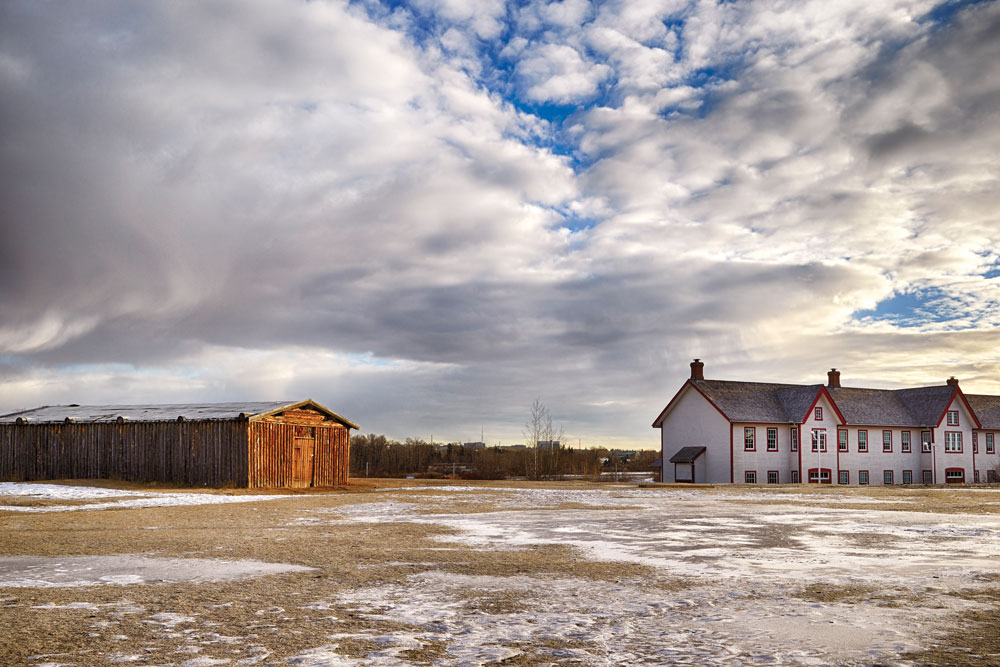
The Fort Calgary site with a replica of one of the original buildings in the foreground and the barracks, built in 1878, in the background.
Built in 1875, this small wooden fort was established by the North-West Mounted Police to combat American whiskey traders. Calgary owes both its name and its origin to this small pine and cedar edifice.
Livingston House and Barn
Heritage Park
Sam Livingston, one of Calgary’s first citizens, built this barn circa 1878 and the cabin circa 1883. The simple log cabin structure where he lived with his family, along with the barn, was donated by the City of Calgary to Heritage Park in 1964. Heritage Park is, in fact, located on part of the former Livingston farm, making these among the living history museum’s earliest buildings.
The Sandstone Schools
Across Calgary
After a major fire in 1886, town officials recommended future buildings be constructed of Paskapoo sandstone rather than wood. Nineteen schools were built of sandstone between 1894 and 1914, and many are still standing.
The Grain Exchange
815 1 St. S.W.
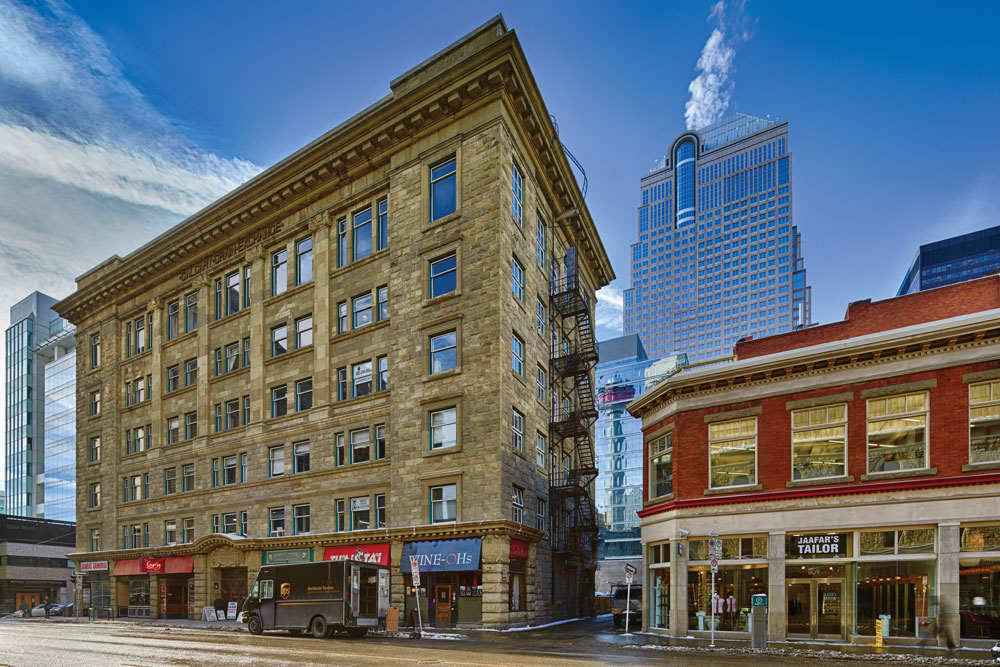
At six storeys, the Grain Exchange was one of the tallest buildings in Alberta when it was completed in 1909. By 1910, it housed 21 grain companies that would set grain prices for the province and spur Calgary’s economic development.
Old City Hall
716 Macleod Tr. S.E.
Constructed in the Richardsonian Romanesque style between 1907 and 1911, this four-storey sandstone building is one of the last of Calgary’s large sandstone buildings and the oldest surviving city hall in the province.
Memorial Park Library
1221 2 St. S.W.
Alberta’s first public library building, this Carnegie library opened its doors in 1912. It’s built in the Edwardian Classicism style popular at the time for large municipal structures.
Theatre Junction Grand
608 1 St. S.W.
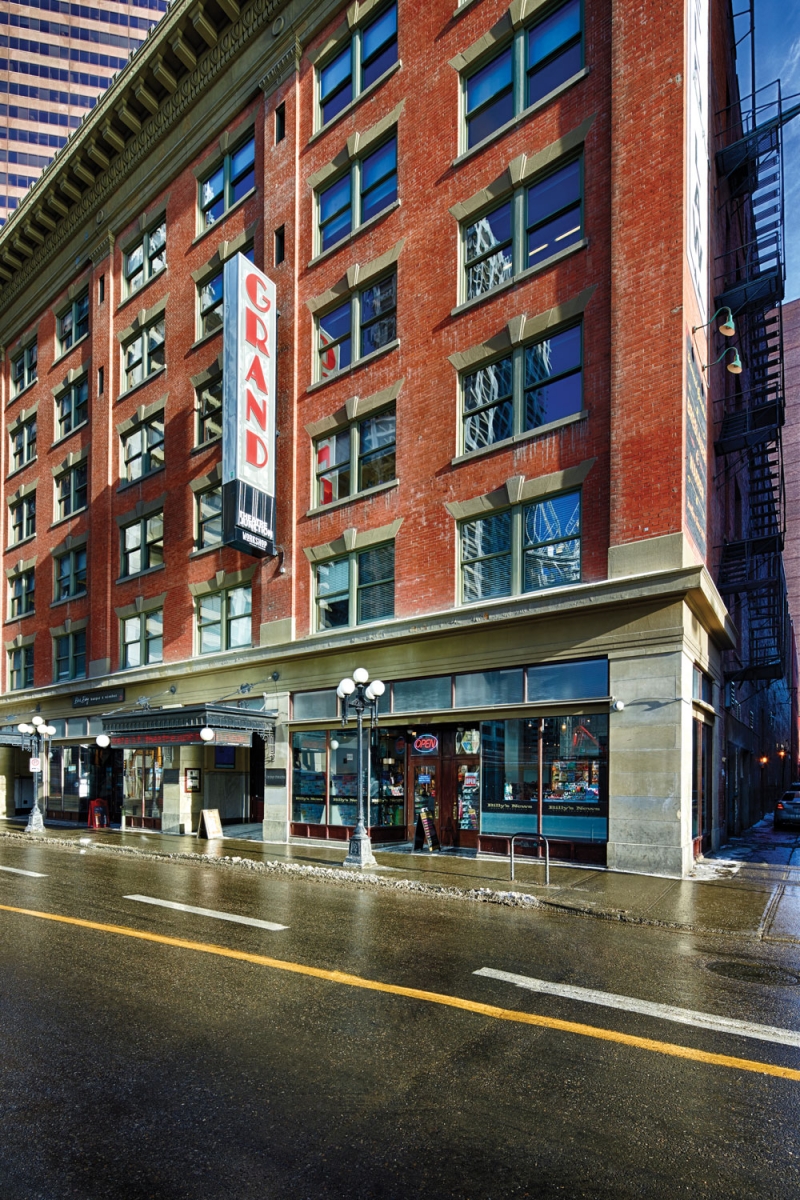
Completed in 1912 and designed in the classical commercial style, the Grand, originally a vaudeville theatre, is also one of the oldest of its kind still standing in Western Canada.
The Bay Downtown
200 8 Ave. S.W.
Opened in 1913, this Edwardian classical-style building was the largest in Calgary at the time. By 1930, it had expanded to occupy a full block and added its familiar granite colonnade.
The Barron Building
610 8 Ave. S.W.
The first-rate office space of the Barron Building helped to draw the oil industry to Calgary after the Leduc oil strike of 1947. The building combines art deco, art moderne and modern architecture and later housed the Uptown Theatre. It is currently undergoing redevelopment.
Southern Alberta Jubilee Auditorium
1415 14 Ave. N.W.
Both the Southern Alberta Jubilee Auditorium in Calgary and its sister building in Edmonton were built to celebrate Alberta’s 50th anniversary, and opened in 1957.
North Hill Centre
1632 14 Ave. N.W.
Built in 1958, North Hill was the city’s first mall. Expanded twice since its inception, first in 1973 (when it became an enclosed mall) and again in 2000, it now counts more than 100 shops.
Chinook Centre
6455 Macleod Tr. S.W.
Opened in 1960, Chinook Centre signalled the up-and-coming nature of the city. Totalling 1.4 million square feet, it is now one of the largest malls in the country.
Centennial Planetarium
701 11 St. S.W.
Built for Canada’s centennial celebration, the planetarium’s brutalist and mid-century modern walls supported one of the largest domes in the world at the time. In 2014, the City approved a proposal for the Contemporary Calgary gallery to take over the space in the future.
Calgary Tower
101 9 Ave. S.W.
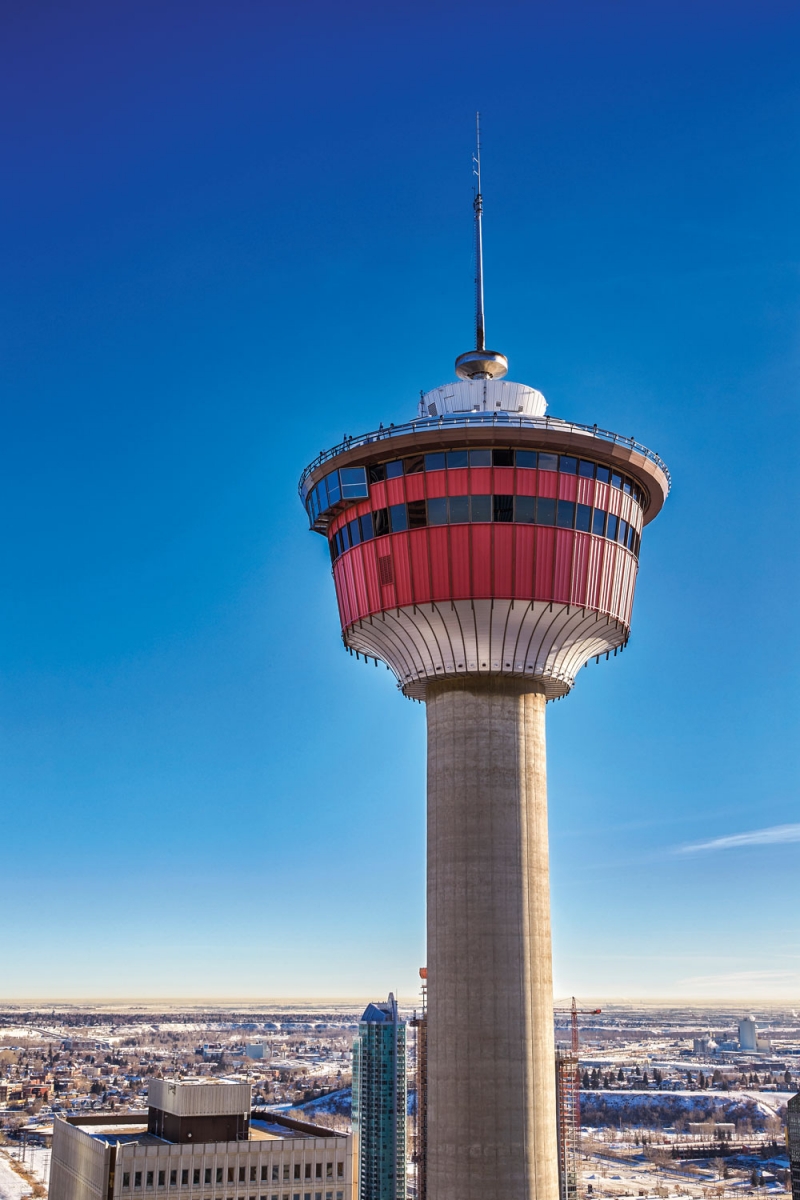
Originally called the Husky Tower, this concrete and steel spire built at a cost of $3.5 million, was the tallest freestanding structure in North America when it was completed in 1968.
The old CBE building
515 Macleod Tr. S.E.
Built in 1969, the Calgary Board of Education Building is one of the city’s best examples of the brutalist style of architecture that was popular from 1950 to the mid-1970s. Sold to a private developer in 2012, its fate remains to be seen.
Scotiabank Saddledome
Stampede Grounds
Built in 1983 at a cost of $97.7 million, the Saddledome’s distinctive curved roof, a hyperbolic paraboloid, is the world record-holder for longest spanning concrete shell of its kind.
Talisman Centre
2225 Macleod Tr. S.E.
Built in 1983, in part for the Western Canada Games, the centre covers 130,000 square feet, and its distinctive Teflon-coated fibreglass roof is the only one of its design in the world.
Calgary Municipal Building
800 Macleod Tr. S.E.
Built when citizens voted for a purpose-built, publicly owned municipal building through a City plebiscite, the 14-storey aluminum and glass Municipal Building was designed by architect Christopher Ballyn and completed in 1985.
The Water Centre
625 25 Ave. S.E.
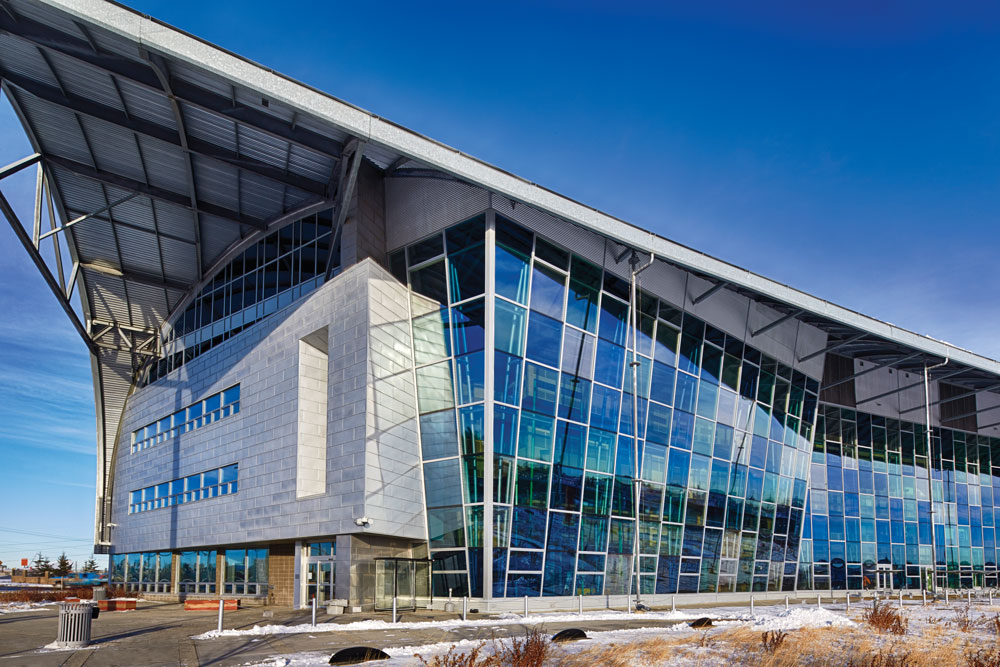
Completed in 2008, the Water Centre was both the first and largest Alberta building to be certified Gold by LEED, which rates buildings’ environmental friendliness.
The Bow
500 Centre St. S.E.
Built for the Encana Corporation, this 58-storey glass and steel construct became the tallest Canadian building outside of Toronto when it was completed in 2012.
